Last Updated on 05/01/2025 by Kimberly
Fleas are more than just a nuisance; they can hit your yard hard, making outdoor spaces uncomfortable for everyone. To kill fleas outside for yard control it’s important to know their lifecycle and behaviors, which helps tackle the problem right at the root.
Fleas have a quick and sneaky lifecycle. They start as eggs, hatch into larvae, develop into pupae, and finally emerge as adult fleas. This cycle can happen faster in warm, humid conditions, which are common in many backyards.
Fleas often find their way into yards via pets, wild animals, or even on clothing and shoes. Once they invade, they usually hide in shaded areas, tall grass, and places where pets spend a lot of time. Recognizing the signs early can prevent a bigger issue later.
Common signs of flea infestations include pets scratching excessively, seeing fleas on your pets, and spotting flea dirt (tiny black specks) in pet bedding or other areas where pets hang out. Sometimes, you might even feel flea bites on your own skin.
Fleas aren’t just itchy; they can pose significant health risks. They can transmit diseases like typhus and plague and cause allergic reactions and tapeworms in pets. Understanding the seriousness of a flea infestation is crucial for effective control.
Kill Fleas Outside With Natural Flea Repellents: Leveraging Plants
Turning to nature offers a gentle yet effective method to keep fleas at bay. Plants like mint, eucalyptus, and pyrethrum are more than decorative; they serve as natural defenses against flea infestations.
Natural flea repellents come with a host of benefits. They’re safe for pets and children, environmentally friendly, and avoid the harsh chemicals found in synthetic products. By using plants strategically, you can create a barrier that keeps fleas out while enhancing the beauty of your yard.
Mint plants, for example, not only emit a scent that fleas detest but are also easy to grow. Eucalyptus trees, with their distinctive aroma, repel fleas effectively and add a touch of greenery. Pyrethrum flowers are another excellent choice, producing a compound that is toxic to fleas but safe for the rest of your garden.
Incorporating these plants into your yard requires minimal effort. They can be planted in borders around areas where pets play, near entry points to the home, or in pots that can be moved as needed. Even a few strategically placed plants can make a big difference in deterring fleas.
Fleas can be a persistent problem, but using natural repellents like these plants provides a sustainable, low-maintenance way to keep your yard flea-free without compromising the health and safety of your family and pets.
Mint Plants: A Powerful Natural Flea Repellent
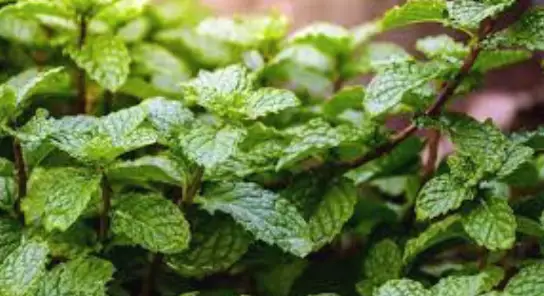
Mint plants serve as a natural deterrent against fleas, thanks to their strong scent that fleas can’t stand. They’re a fantastic starting point for anyone looking to fend off these pests without resorting to chemical treatments.
Growing mint plants is straightforward and suitable for even novice gardeners. Select a sunny spot in your yard with well-draining soil. Mint can spread quickly, so consider planting it in containers or using garden borders to keep it in check. Regular watering and occasional pruning will keep your mint plants healthy and effective.
To maximize their flea-repelling properties, plant mint near areas frequented by pets, like doghouses, kennels, and play zones. Creating a border of mint around your yard can act as a deterrent, keeping fleas from advancing into more central areas.
Beyond their flea-repelling abilities, mint plants offer additional benefits. Fresh mint can be used in cooking, for making teas, and even in homemade cleaning solutions. Having a few mint plants around ensures you always have aromatic leaves on hand for culinary and household uses.
Eucalyptus Trees: Creating a Flea-Free Oasis
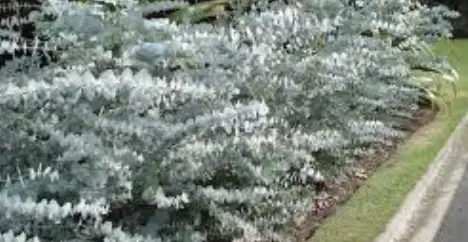
Eucalyptus trees are a powerhouse in the fight against fleas, known for their potent, fresh aroma that these pests find unbearable. Introducing eucalyptus trees to your yard can create a long-lasting and natural flea repellent solution.
Growing eucalyptus trees is relatively simple, as they thrive in a variety of climates. They prefer sunny locations with well-draining soil and require regular watering, especially in the early stages. Once established, these trees are quite hardy and low-maintenance.
These trees can be strategically planted around the perimeter of your yard or near areas where pets and children frequently play. This not only helps keep fleas away but also provides shade and an attractive backdrop to your outdoor spaces.
The benefits of eucalyptus trees extend beyond just flea control. They are known for their strong, pleasant scent, which can improve the ambiance of your yard. Additionally, eucalyptus leaves can be used in natural remedies and crafts, adding more value to having these trees around.
Caring for eucalyptus trees involves minimal effort once they are established. Pruning may be necessary to maintain their shape and encourage healthy growth. Regularly check for pests and diseases to ensure your trees remain robust and effective against fleas.
Pyrethrum Flowers: The Garden’s Natural Defender

Pyrethrum flowers, a type of chrysanthemum, are highly valued for their natural insecticidal properties, particularly effective against fleas. Incorporating these flowers into your garden offers an elegant and potent solution to flea control.
Growing pyrethrum flowers isn’t complicated. They thrive in a variety of soils and prefer full sun. Start by planting seeds or young plants in well-drained soil, ensuring they receive adequate water during their growing period. Once established, these flowers require minimal maintenance.
For flea control, plant pyrethrum flowers in areas where pets spend a lot of time or near the entrance points of your home. Their strong insecticidal properties act as a natural deterrent, reducing the flea population in your yard significantly.
These flowers provide more than just pest control. Their vibrant blooms add aesthetic value to your garden, creating a visually appealing and functional landscape. Additionally, pyrethrum flowers benefit other plants by repelling a variety of common garden pests, which means fewer chemicals and pesticides are needed overall.
Combining pyrethrum flowers with other flea control methods enhances their effectiveness. While the flowers work as a strong repellent, using them alongside methods like regular yard maintenance, flea traps, and natural predators can create a comprehensive flea management system.
Maintaining pyrethrum flowers involves regular watering and occasional pruning to promote healthy growth. Deadheading spent blooms can encourage more flowers to grow, ensuring a continuous supply of natural flea repellents.
Chemical-Based Flea Control To Kill Fleas Outside: When and How to Use Them
While natural methods are effective, sometimes a more aggressive approach is necessary to fully eradicate fleas from your yard. Chemical-based flea control products can provide a strong defense, especially in severe infestations.
There are various types of chemical products available for yard flea control, including sprays, granules, and insect growth regulators (IGRs). Sprays can be applied directly to problem areas, ensuring immediate impact, while granules can be spread across the yard to offer long-term protection. IGRs interrupt the flea lifecycle, preventing larvae from maturing into biting adults.
Safety is a crucial consideration when using chemical products. Always follow the manufacturer’s instructions precisely. Wear protective clothing, keep pets and children away from treated areas until the products have dried or settled, and avoid applying chemicals near edible plants or water sources.
Blending chemical and natural flea control methods creates a balanced approach. For instance, using chemicals for initial knockdown and natural repellents for ongoing prevention can be very effective. This strategy minimizes chemical exposure while harnessing the strengths of both approaches.
Expert recommendations emphasize the importance of timing and consistency when using chemical treatments. Applying products during the cooler parts of the day, like early morning or late evening, can increase effectiveness. Regular treatment schedules help manage flea populations before they become unmanageable.
Kill Fleas Outside: Blending Strategies for a Healthy Yard
Combining various flea control methods ensures a comprehensive approach that tackles the issue from all angles. Each strategy, be it natural or chemical, plays a unique role in maintaining a flea-free environment.
Start with assessing the severity of your flea problem. For minor infestations, natural repellents like mint, eucalyptus, and pyrethrum flowers offer an effective first line of defense. Planting these around areas frequented by pets and near entry points can create a natural barrier.
For more severe infestations, consider chemical treatments as a powerful tool for initial control. Once the primary population is reduced, continue with natural methods to keep flea numbers low. Regular yard maintenance, like mowing and removing debris, supports these efforts by eliminating flea habitats.
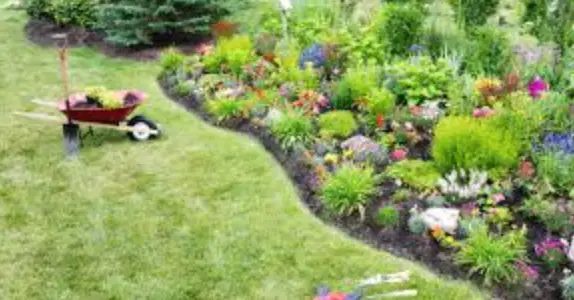
Consistent monitoring is key. Check pets and outdoor areas regularly for signs of fleas. Quick action at the first sign of fleas can prevent a small problem from escalating.
Safety should always be top of mind. Whether using natural or chemical methods, follow guidelines to ensure the well-being of your family and pets. Opt for products and practices that align with the environmental health of your yard.
Achieving a flea-free yard requires ongoing effort and a mix of approaches. By blending natural repellents with targeted chemical treatments and maintaining good yard hygiene, you can create a safe, enjoyable outdoor space for everyone.
In Conclusion To How To Kill Fleas Outside
I hope that you found the information here at fleas b gone useful in your fight for outside flea control. If you have any questions or if you have anything to share that has worked for you, please leave it in the comments section below. It’s always great to share what has worked for yourself, to help others.
Thank you for visiting Fleas B Gone have a great day 🙂

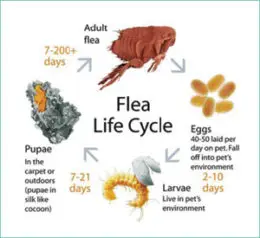
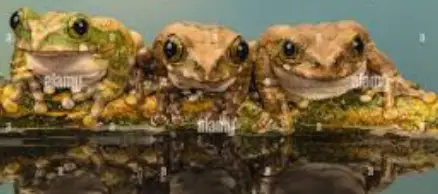
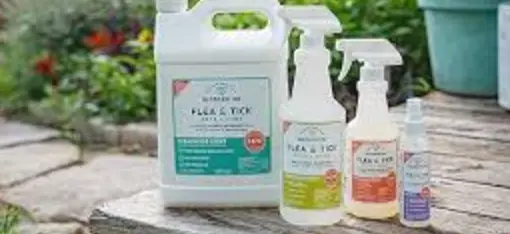


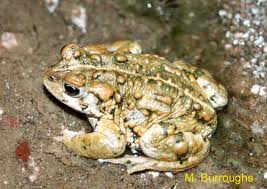
Hi Kimberly
Thanks for sharing this well laid out article , Great job i truly enjoyed the break down on the differences between Natural Flea Repellents: Leveraging Plants
Mint Plants, Eucalyptus Trees, Pyrethrum Flowers,
i have been thinking about building a garden but also something nice to look at.
My question is
what one would you recommend most to have in your yard ?
great share thank you
Hello Shawn, I’m very glad you enjoyed the article! Honestly, I use all of them, the mint is great because you can use it in recipes as well, I love it in my water and tea. The eucalyptus trees are so pretty with the frost looking leaves and the bright colors of the pyrethrum flowers aren’t only beautiful in full bloom but are a natural mosquito repellent along with a flea repellent.
Best of luck with your garden, I’m sure it will be beautiful especially with the addition of any of these plants 🙂
This is a very comprehensive guide on flea control, and I appreciate how it covers both natural and chemical methods. The focus on the flea lifecycle really emphasizes the need for a well-rounded approach, and I love the idea of using plants like mint, eucalyptus, and pyrethrum flowers as natural repellents. It’s also helpful that the article highlights the safety of these methods for pets and children.
I found the section on chemical control useful as well, especially when dealing with larger infestations. The combination of natural and chemical approaches seems like a balanced strategy to maintain a flea-free yard.
Great job on providing a practical and environmentally friendly solution!
Thank you Isaac, I’m very happy you enjoyed the article 🙂
Hi there,
Thanks for sharing Kimberly, your detailed guide on tackling fleas in the yard is incredibly insightful! Understanding the lifecycle and behaviors of fleas is crucial for effective control. Using natural repellents like mint, eucalyptus, and pyrethrum sounds like a safe and eco-friendly approach. It’s impressive how you emphasize early detection to prevent bigger issues later on. Thanks for sharing your expertise on this topic.
Thank you Dr cyprain! Fleas can be a very large problem for many people and using all natural deterrents in our yards with the different flowers and trees is a great way to keep the tiny pests away. Thank you for visiting Fleas B Gone.. Have a great day 🙂